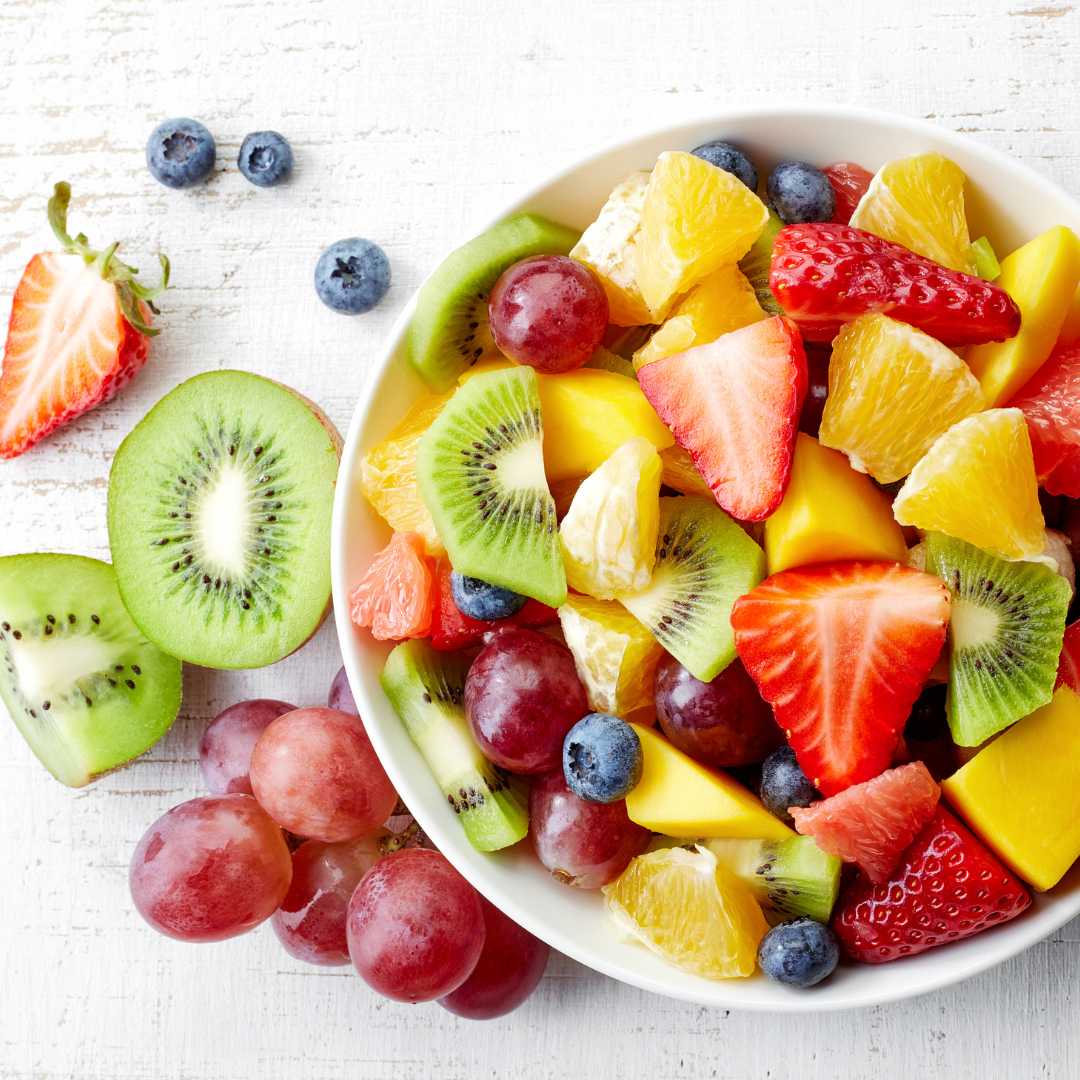Social media these days is full of fear-mongering around fruits, how bad they are, how they have fructose or how fruit juice is as bad as drinking Coca-Cola. While the excess of anything is bad for us, clubbing fruits with ultra-processed foods is rather unhelpful in an era where lifestyle and poor dietary choices are pushing us towards the epidemic of lifestyle diseases.
So, let’s understand just how much fruit is ok for us to eat.
How many grams of fruit should you eat in a day?
WHO recommends a minimum of 400 grams of fruits and vegetables per day. More specifically, five servings a day are recommended, where a serving size is 80 grams.
A 2021 study additionally found the following:
- Eating less than two servings of fruits and vegetables was bad for the health.
- Eating five was optimal and gave the maximum benefit. This included 2 servings of fruits and 3 servings of vegetables.
- More than five servings of F&V did not give any additional benefits. They also found that eating more F&V was mostly fine except for the starchy, sugary stuff like potatoes, peas, corn and fruit juices.
Since this study found two servings of fruits a day as optimal, and a serving size is 80 grams, this roughly translates to 160 grams of fruit per day or 1.1 kg of fruit per person per Week. Which is a great reference point, but it is not complete. One kilo of mangoes is very different from one kilo of strawberries.
Therefore it becomes useful to have a calorie-based target as an additional reference point. For that, let’s use the EAT Lancet report.
How many calories of fruit should you eat in a day?
The EAT-Lancet study recommends getting 126 calories a day from fruits. This is as part of a 2500-calorie diet suitable for a moderately active adult male. However, the EAT-Lancet diet has drawn some criticism, mainly because of its heavy inclination towards a plant-based diet and its affordability. WHO eventually distanced itself from this diet. Hence, while this number can serve as a guideline, it’s essential to understand its context.
Source: PMID: 31708415
How many fruits and vegetables do Indians eat right now?
Shifting our focus to India, the numbers are not particularly encouraging. A staggering 98% of the Indian population doesn’t meet the recommended fruit and vegetable intake. Here are some facts to consider
- 98.4% of Indian adults did not consume enough fruits and vegetables as per WHO recommendations
- The mean serving of fruits and vegetables consumed per day was 1.7 (against the recommendation of 5)
- Alarmingly, as a country, we are eating almost double the recommended amount of salt due to our high reliance on chips, namkeen, wheat, rice, cereals, achar etc.
- In comparison to the EAT-Lancet diet recommendations of 126 calories of fruits a day, an Urban Indian got only 45 calories from fruits.
Therefore it is very clear that the problems we are facing require greater consumption of fruits and vegetables, not less. And the focus should be on finding ways to minimize the consumption fo cheap but hyper-palatable junk foods and increasing our protein intake, which is abysmal.
The source of this data is the NNMS Survey conducted in 2017-18.
Personalizing Your Intake
General guidelines, like the ones mentioned above, provide a good starting point for most people. However, it’s crucial to understand that these are broad recommendations meant for vast populations. It’s perfectly okay if you consume more than the recommended 400 grams of F&V or 126 calories of fruits on certain days. After all, no two days are the same.
Remember, the essence of these guidelines is to help you build a foundation. They’re not set in stone, and you don’t have to count every calorie or gram. The idea is to understand the underlying message and then adapt and personalize it to your specific needs and preferences.
In summary, while it’s important to be informed and aware of dietary recommendations, it’s equally vital to listen to your body and make choices that align with your unique needs and lifestyle.







